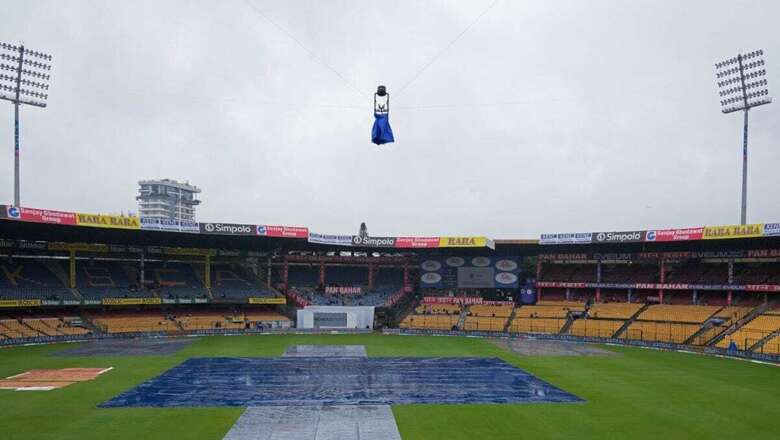
views
The first Test of the three-match series between India and New Zealand is taking place at M Chinnaswamy Stadium in Bengaluru. The match was scheduled to start at 9:30 a.m. on Wednesday (October 16), but due to heavy rain in Bengaluru, no play has been possible so far. In fact, the toss is yet to take place. There are high chances that the first day’s play will get called off. But if the weather improves as the day progresses, fans can get a chance to see some action on the field.
The drainage system at M Chinnaswamy Stadium is world-class, and within a few minutes, the groundsmen can prepare the wicket for a high-voltage action.
As the rain threat looms large on the first India-New Zealand Test in Bengaluru, here’s all you need to know about how the drainage system at M Chinnaswamy Stadium works.
Karnataka State Cricket Association (KSCA) in 2017 had installed a SubAir subsurface aeration and vacuum-powered drainage system at the Chinnaswamy Stadium.
The technology helps to dry the outfield faster and prevent waterlogging, as officials during the unveiling of the project claimed the 200-horsepower machine can drain water “36 times faster” than usual systems as it can remove water at 10,000 litres per minute. The match can begin and/or start again in 15 or 20 minutes after the rain stops.
“I had worked at the stadium for two or three years before the sub-air system was installed. I felt it was a tough phase because when it rained heavily, a lot of water would get accumulated on the outfield. The stadium did not have Bermuda grass like now; back then, it was mixed grass. In some parts of the ground, there would be more water than others, and it was tough to clear them,” India’s first female pitch curator, Jacintha Kalyan, had said in a video back in 2019.
The drainage system of Chinnaswamy Stadium is very good, if the rain stops then the match will start within 30 to 45 minutes.#INDvNZ #PAKvENG pic.twitter.com/esStiBxFAg— kuldeep singh (@kuldeep0745) October 16, 2024
According to a report in Sportstar, in order to build the entire system, it cost around Rs 4.25 crore, including about four kilometres of pipe length that has been in use.
“The ICC delegation [ahead of the 2023 ODI World Cup] that visited the stadium was most impressed with the SubAir system. Even a big puddle disappears in seconds; it works like magic,” KSCA vice president B Sampath Kumar had said last year, as reported by Sportstar.


















Comments
0 comment